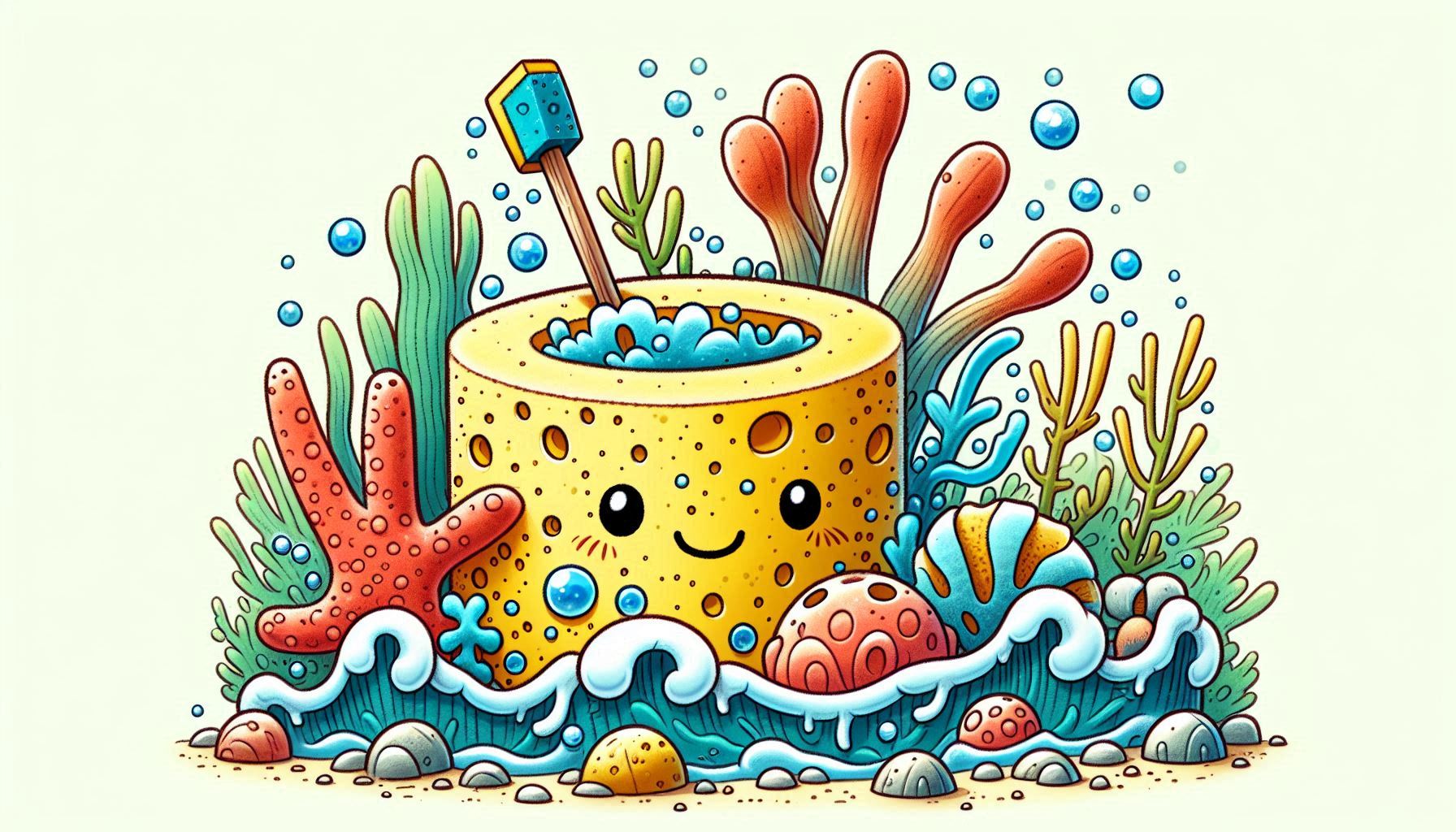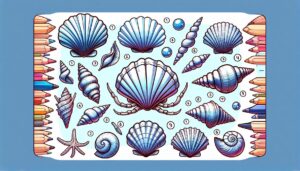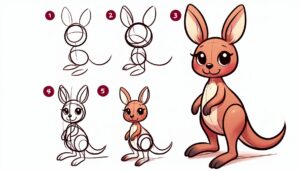How to draw barrel sponge, a marine creature belonging to the Demospongiae class, may be a fun and instructive activity. Drawing barrel sponges is an interesting exercise because of their distinctive colors and textures, as well as their vast size and barrel-like shape. To get you started, here’s a step-by-step tutorial, some FAQs, resources, and ideas:
Table of Contents
Materials Needed:
- Pencils (various hardness)
- Erasers
- Fine-tip pens
- Colored pencils, watercolors, or digital drawing tools
- Reference images
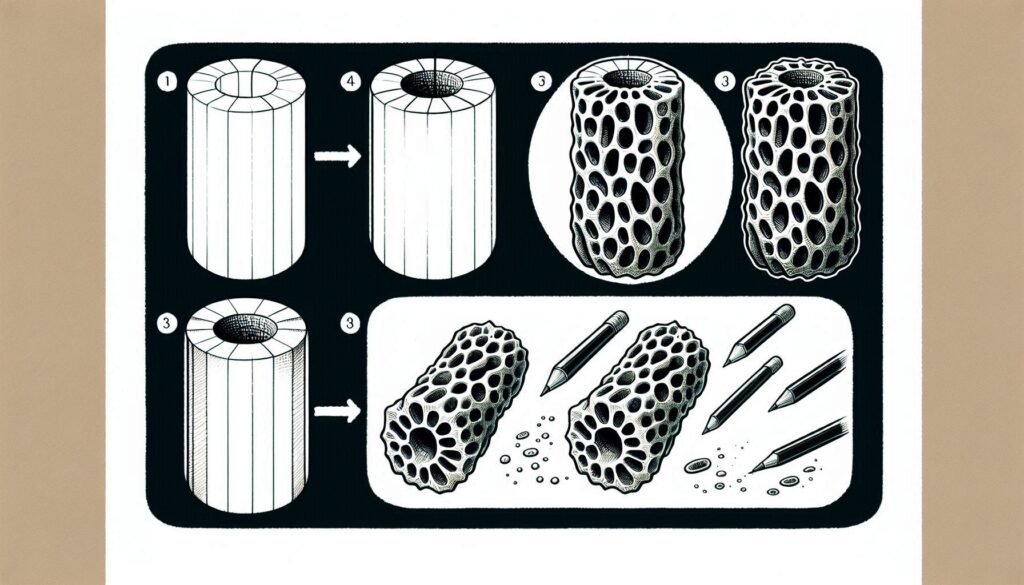
Step-by-Step Guide: How to draw Barrel Sponge
Step 1: Gather Reference Images
- To comprehend the forms, hues, and textures of barrel sponges, look for reference photos of them.
Step 2: Sketch the Basic Shape
- Start by using big cylindrical or barrel-shaped forms to lightly sketch the fundamental contour of the barrel sponge. Take note of the placement and general organization.
Step 3: Add Details
- Include specifics like the sponge’s texture, the osculum, a huge central opening, and any surface abnormalities. The surface of barrel sponges is frequently porous or rough.
Step 4: Shading and dimension Shading
- To give your drawing dimension, add shading. To get a three-dimensional look, choose your light source and shade the sponge’s other side. For texture, use stippling or cross-hatching.
- Details: Include extra surface details, like the tiny holes (ostia) and any discernible patterns or unevenness in the sponge’s texture.
Step 5: Applying Color to the Base
- Give the sponge a foundation color application. Vibrant tones of red, purple, orange, or brown can be found in barrel sponges. To gradually add color, use light coats of watercolor or colored pencil.
- Highlights and Shadows: To make the image appear more three-dimensional, add highlights and shadows. Darken the parts that are shaded and lighten the portions that receive direct light.
Step 6: Context and Setting
- Sea Environment: Take into account incorporating aspects of the native habitat of the sponge. To put the barrel sponge in perspective, draw the nearby reef, coral, fish, or other marine life.
- Last Touches: Go over your drawing to identify any details or finishing touches that could improve its brightness and realism.
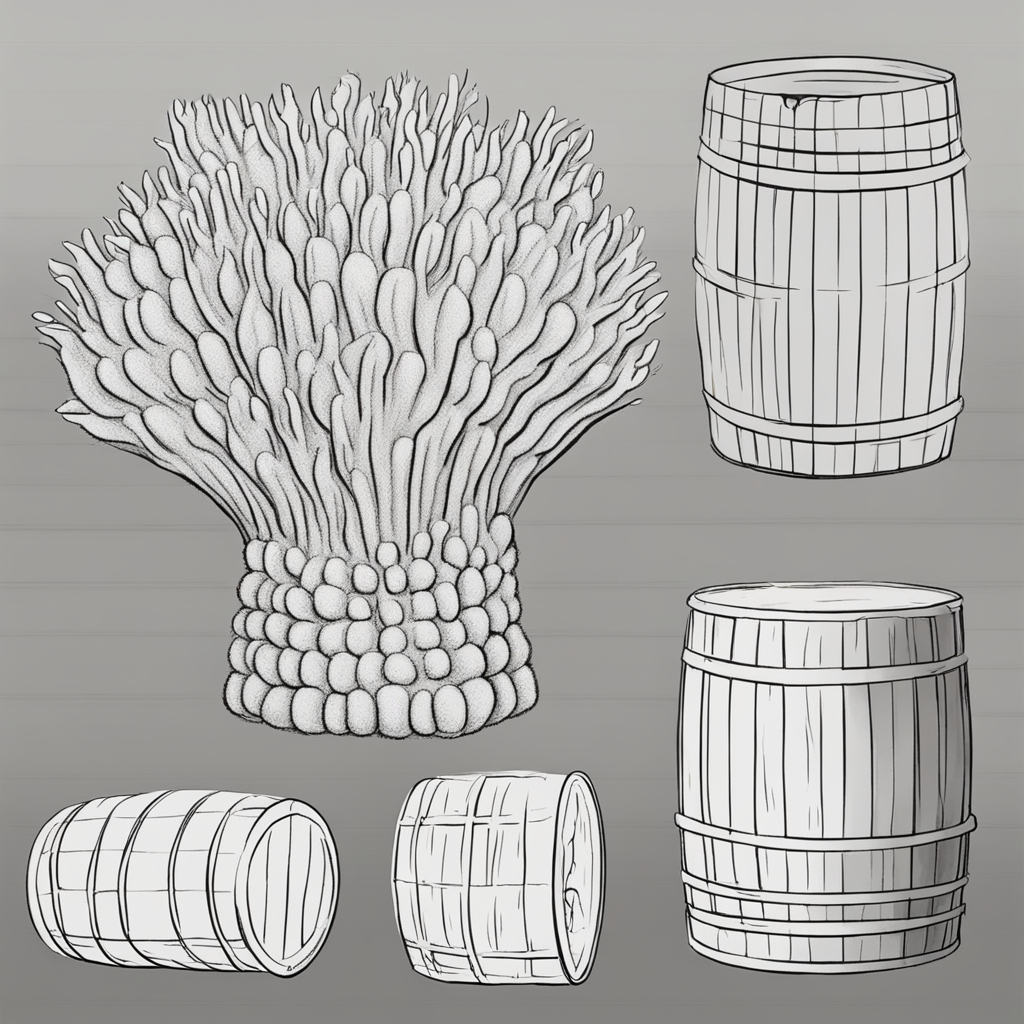
Frequently Asked Questions (FAQs)
Q: What do barrel sponges include?
A: Large, cylindrical sponges that are a member of the Demospongiae class are known as barrel sponges. They are distinguished by their enormous size, vivid hues, and rough, porous surfaces.
Q: What shades do barrel sponges come in?
A: The color of barrel sponges varies based on their location and the presence of symbiotic algae. They can be red, purple, orange, brown, and even green.
Q: How are barrel sponges fed?
A: Filter feeders are barrel sponges. By allowing water to pass through their porous surfaces, they catch plankton and other tiny particles, which they subsequently consume.
Resources
Textbooks on marine biology: These can offer comprehensive details and pictures of barrel sponges.
Online databases: High-quality photos and thorough descriptions can be found on websites like as National Geographic, Marine Bío, and scholarly journals.
Aquariums & Marine Exhibits: You may see barrel sponges and other marine life up close by going to an aquarium.
Ideas and Tips
- Play with Media: Experiment with various media to determine which best conveys the vivid colors and textures of barrel sponges, such as watercolors, colored pencils, or digital tools.
- Examine Actual Specimens: For an understanding of the structure and coloration of real barrel sponges, try to view them in an aquarium or through underwater photography.
- Exercise Textures: Practice each of the textures independently for a while. Apply crosshatching and stippling to produce a rough, porous texture.
- Mix the Elements: To add context and depth to your underwater image, incorporate more aquatic components like as fish, coral reefs, and sea plants with your barrel sponge.
Conclusion
You can draw a barrel sponge beautifully and accurately by using this tutorial, capturing the minute details and striking hues that make these marine animals so intriguing. Have fun with your drawings!
For a fun guide on drawing a glass sponge, including how to sketch its cool shapes, add fun details, and bring it to life with colour, check out the tutorial here. This guide simplifies the process into fun steps, making it easy for everyone to capture the lovely charm of this sea creature.

